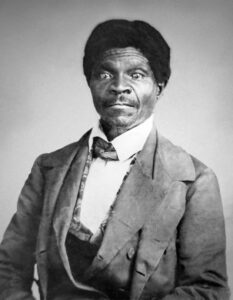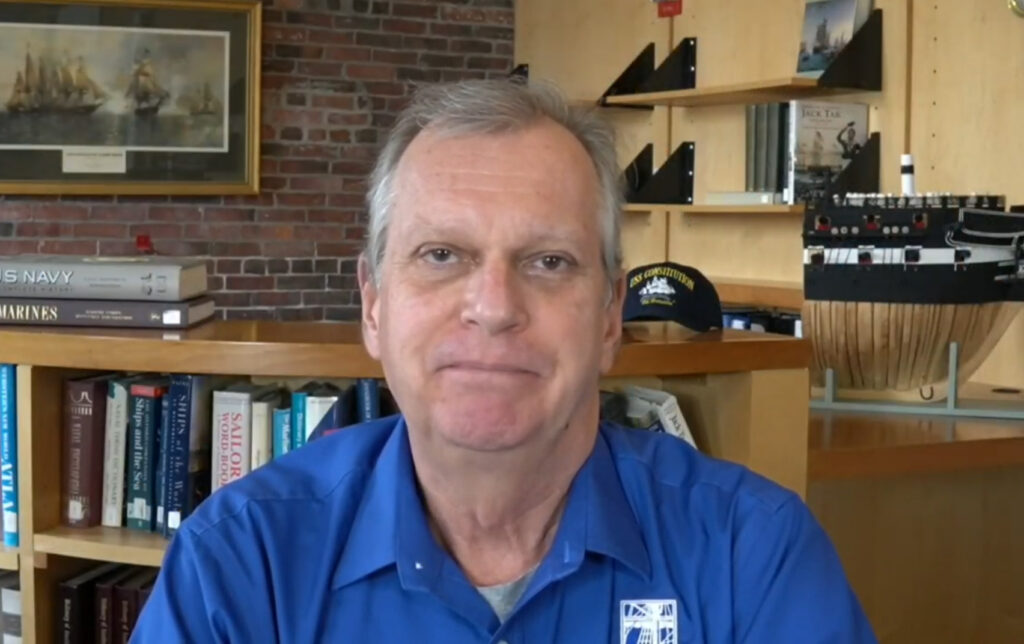In this Dispatch, Stan visits Camilla, Georgia, and looks back on one of the most notorious incidents of political and racial violence in Georgia’s history that happened there 155 years ago.
Category Archives: Places
The Law of Unintended Consequences
 The Supreme Court’s decision was highly anticipated—and was leaked before the Court’s announcement. The Court would be ruling on the most contentious issue of the age, one that had threatened to tear the country apart for decades. When it was announced, one side hailed it as the final word on a divisive subject, finally laying the issue to rest. The other side exploded in moral outrage, charging the court with action far beyond its jurisdiction by trying to solve a complex and difficult political issue, overturning a long-standing precedent, and vowed to disregard the ruling and take the appeal directly to the American people.
The Supreme Court’s decision was highly anticipated—and was leaked before the Court’s announcement. The Court would be ruling on the most contentious issue of the age, one that had threatened to tear the country apart for decades. When it was announced, one side hailed it as the final word on a divisive subject, finally laying the issue to rest. The other side exploded in moral outrage, charging the court with action far beyond its jurisdiction by trying to solve a complex and difficult political issue, overturning a long-standing precedent, and vowed to disregard the ruling and take the appeal directly to the American people.
Sound familiar? It was March 6, 1857, and the case was Dred Scott v. Sanford. It has often been called by historians “the worst Supreme Court decision ever handed down.”
Dred Scott was an enslaved man who lived in Missouri (a slave state) with an Army surgeon, Dr. John Emerson. Emerson took Scott to the free state of Illinois and then on to the free territory of Wisconsin, where Scott married his wife, Harriet Robinson. Four years later they returned to Missouri with Emerson. After Emerson’s death, his widow refused to sell the Scotts their freedom. With the help of anti-slavery lawyers, Scott sued, claiming that his residence in Illinois and Wisconsin meant that he was free. The case worked its way through state courts. Mrs. Emerson eventually transferred Scott’s ownership to her brother, John Sanford, who lived in New York state, moving the suit into Federal jurisdiction. The case finally made its way to the Supreme Court, presided over by Chief Justice Roger Taney of Maryland.
Missouri applied for statehood in 1820 as a slave state, which would have upset the Congressional balance of power between free and slave states. Maine came in as a free state at the same time, but Congress, passing the Compromise, ruled that all future territories west of Missouri and north of Missouri’s southern border at latitude 36°30′ would be free. The Missouri Compromise had held for 37 years, even as the agitation over slavery in the western territories had fiercely divided the country.
The Taney Court, in a 7-2 decision, handed down its decision on March 6, just two days after pro-slavery Pennsylvania Democrat James Buchanan’s inauguration as the 15th president.
Taney could have ruled that Scott, being Black and enslaved, was not due his freedom and left it at that. But Taney went much further, ruling that Black Americans—whether enslaved or free—were not citizens, had never been citizens, and would never be, ignoring the precedent that African Americans were citizens in several states already. Not being citizens, he ruled, they had no standing to sue in any court in the United States and in fact had “no rights which any white man is bound to respect.”
Again, Taney and his majority could have stopped there. But Taney wanted to put an end to the acrimonious debates threatening to rend the Union asunder. He ruled that the Missouri Compromise of 1820 forbidding slavery in the western territories had been unconstitutional, that Congress never had the right to forbid or abolish slavery in any territory. Slavery followed the flag.
Associate Justice James Moore Wayne of Georgia played a large role in pushing the Court to go farther than simply issuing a narrow ruling. Hoping that the Court could do what politicians seemingly could not—settle the slavery question for good—Wayne was instrumental in persuading the Court to rule the Missouri Compromise unconstitutional, and his concurring opinion went farther in supporting Taney’s than any other justice’s.
The White South embraced the decision as an answered prayer while a storm of anger swept across the North. Georgia’s Robert Toombs bragged that he would call the roll of his slaves under Boston’s Bunker Hill Monument, while abolitionists exploded in outrage when they read newspaper headlines that boasted, “The Triumph of Slavery Complete.” Northern Free-Soilers and champions of popular sovereignty—the right of citizens in each territory to decide the issue for themselves—thought the ruling a blow against democracy. Ultimately the decision split the Democratic Party into irreconcilable factions while uniting the nascent Republican Party in opposition to what it considered an outrageous case of judicial overreach that had no moral validity and insulted freedom-loving Americans everywhere.
The decision proved to be a disaster for the Supreme Court and the proslavery advocates who celebrated it. The Court’s reputation was damaged, and far from quelling the slavery issue, the decision backfired, pushing the country ever closer to Civil War. That conflict did exactly what Taney had denied possible: It destroyed slavery and, through the Reconstruction amendments, made citizens of the formerly enslaved, in the process forever altering the relationship between the Federal government and the American people.
The Black struggle for full citizenship during the era of Emancipation and Reconstruction would lead to the great Civil Rights revolutions of the 20th century—and, ironically, the heavily politicized Dred Scott case helped pave the way.
Dispatches from Off the Deaton Path: Winning the American Revolution
On the anniversary of the American victory at Yorktown, Stan looks back at how the event unfolded and the role of some notable Georgians that led to the British surrender at Yorktown 241 years ago, resulting ultimately in American independence.
Dispatches from Off the Deaton Path: Georgia’s Royal Connection
With the death of Queen Elizabeth dominating the news, Stan looks back at Georgia’s historic connections to Great Britain, the monarchy, and the British Empire.
Visiting Scholars: Dr. Carl Herzog
Off the Deaton Path would like to introduce our readers to some of the scholars researching in the Georgia Historical Society’s newly expanded and renovated Research Center. This week we’ll spotlight Dr. Carl Herzog, Public Historian at the USS Constitution Museum in Boston, Massachusetts.

Tell Us About Yourself: I came to a career in history a little later in life, so my career path has been a bit different. I’m originally from South Florida, did my undergraduate in journalism at the University of Florida, and started life as a newspaper reporter. Then I ran away to sea on a tall ship. I ended up spending a long career working as an instructor and deck officer on traditional sailing ships conducting college semesters-at-sea and other educational programs. I taught traditional seamanship, celestial navigation, and maritime history. I really enjoyed the history aspects of that work and eventually decided to go back to school. I earned a master’s from the University of Rhode Island and a doctorate from the University of Massachusetts, Amherst. For the last five years, I’ve been the public historian for the USS Constitution Museum in Boston, a position that combines a lot of my previous sailing-ship knowledge and skills with public history and historical research.
Tell Us About Your Current Project: USS Constitution’s framing is made of southern live oak timbers that originally came from St. Simons Island. To supplement the workforce of New England timbermen, the Navy initially hired enslaved people from the plantation owners whose property the trees were coming from. So, some of the timbers that still make up the ship today were made possible by enslaved people. One of the missions of the USS Constitution Museum is using the ship as a lens to explore broader topics of maritime history and the American experience. We wanted to explore this story in more detail, learning what life on the coastal islands was like for enslaved people at the time, and learn more about the property owners who provided this enslaved labor as well as the trees to the fledgling U.S. Navy. A grant from the Massachusetts Foundation for the Humanities funded my travel to come to Savannah and a couple other archives as well as visiting the St. Simons properties where the timber was cut. The immediate result of this round of research will be a report that helps inform our future programming and exhibits on this topic.
What Are you Finding at GHS? GHS is home to a diverse range of collections and assets that have been profoundly helpful with this work. The collections of St Simons property owners, Leake, Hamilton, and Couper have all provided insight into the nature of life during a pivotal time of transition on St Simons Island. The property owners were eager to clear live oaks off their land in order to begin planting sea island cotton, a cash crop that quickly came to dominate the island and led to a boom in its enslaved population for the first half of the 19th century. The plantation journal of Richard Leake (MS 0485), in particular, helped me confirm his personal engagement with the Navy captains sent to Georgia to oversee the timber work. In addition, a number of early secondary sources and GHS’s collections of research papers of those authors have provided context and details on others involved in the Navy’s work. It also provided an interesting window into the growth of local pride and legends surrounding the region’s role in contributing to the construction of Constitution. As a result, my work at GHS has been able to greatly inform my visits to St Simons as well as initiating new threads of ongoing research at the National Archives.
